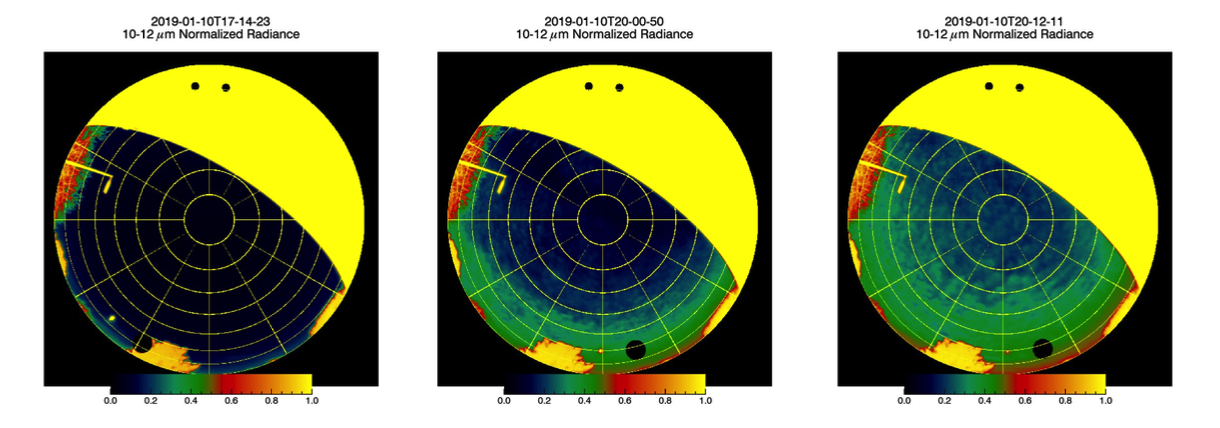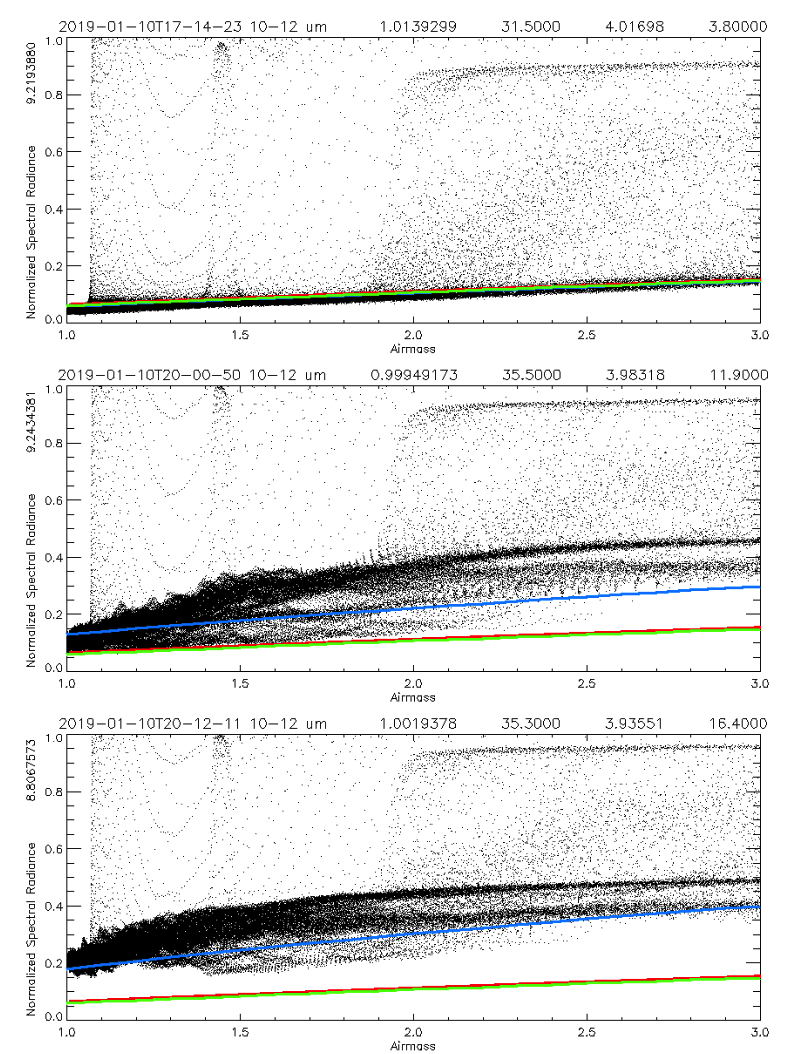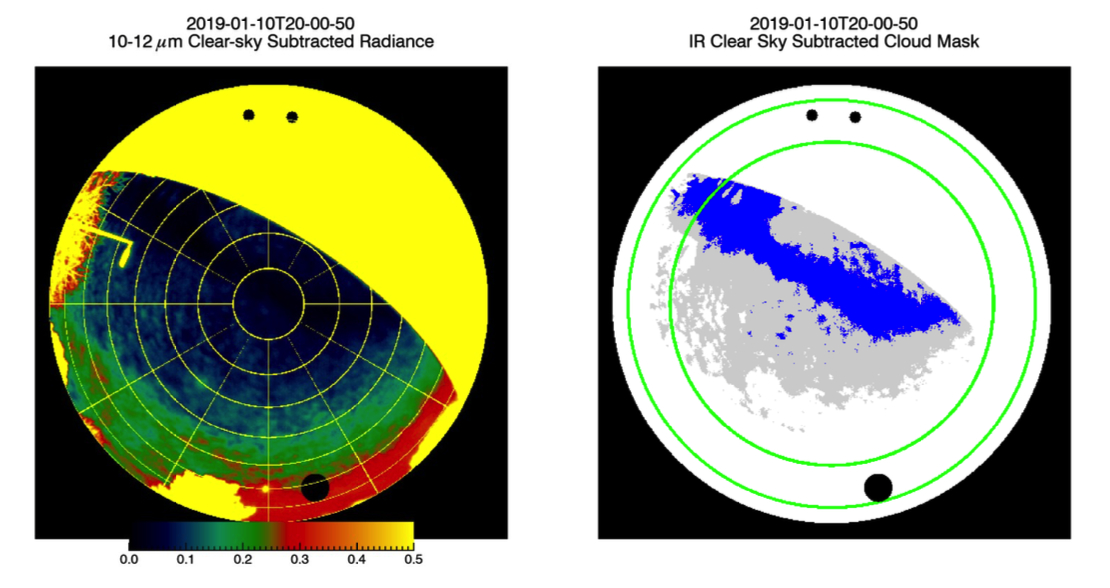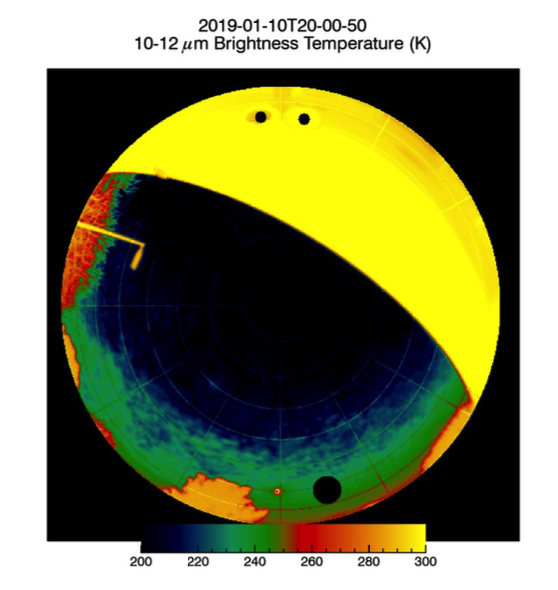Infrared
Analysis & Data Products
Our industry leading infrared analysis software provides data products & measurements second to none. We work closely with our customers to provide complete understanding of our analysis and how it applies to their application domain. In addition to our standard data products (below), we can work with you to develop a data set that best meet your requirements.
Spectral Radiance (SR) and Normalized Spectral Radiance (NR): The spectral radiance (SR) is given in units of Watts/m2/μm/strd and is computed over the bandpass of the filter. Temperature data from the dual external blackbody and instrument response data derived from the blackbody calibration procedure are used in determining SR. Normalized spectral radiance (NR) is simply the calibrated SR divided by the spectral blackbody radiance (a constant) derived from the ambient temperature. SR and NR are the primary data products that form the basis of all other data products.

Figure 1: Normalized Spectral Radiance (NR) for clear (left), partly cloudy (middle), and cloudy (right) for Solmirus’ 10-12 μm filter. Note: Large yellow area indicates building where NR is 1.0 or greater.
Airmass Plots (AM): The AM data product displays the relation of NR for each pixel as a function of airmass. It is these data that are analyzed to determine the clear sky normalized radiance for each pixel. Solmirus continues to perfect its algorithm in determining the clear sky normalized radiance, which includes analyzing AM plots from previous data acquisition sequences to inform the best possible solution for a specific image.

Figure 2: Aimass (AM) plots for clear (top), partly cloudy (middle), and cloudy (bottom) images shown in figure 1. The green line indicates the clear sky normalized radiance determined for each image. The clear sky normalized radiance is compared with simulated atmospheric data to compute water vapor.
Clear Sky Subtracted Normalized Radiance (CS_SUB): CS_SUB represents the difference of the NR image and the clear sky radiance derived from the analysis of the NR vs AM data. This analysis is used to separate cloud emission from clear sky emission and is used for sky cover analysis.
Cloud Mask (CS_SUB_MASK): Thresholds are assigned to the CS_SUB data to produce cloud mask data. Typically, low emission (LE) and high emission (HE) clouds are displayed in the CS_SUB_MASK data product. Sky Cover values are computed (percentage) in two user-defined fields of view (typically set to 100 and 160 degrees) and are recorded in the FITS header.

Figure 3: CS_SUB (left) and CS_SUB_MASK (right) images shown for middle image in figure 1. CS_SUB_MASK shows sky cover assessment using selected thresholds (Blue = Clear, Gray = Low Emission (LE), and White = High Emission (HE)).
Brightness Temperature (BT) and Color Temperature (CT): BT is determined by equating the measured spectral radiance with a blackbody whose temperature yields this same spectral radiance. CT can be inferred by taking the ratio of the sky’s spectral radiance acquired from two filters and equating this to a blackbody at a temperature that yields this same spectral radiance ratio. BT and CT are given for each pixel in ASIS’s field of view. A subset of this data is used to report the median BT and CT at the zenith in the FITS header. BT and CT data can then be used in conjunction with lapse rate data from the operational site to determine Cloud Base Height (CBH). Note: BT data is only accurate in determining CBH in cases where the cloud is optically thick.

Figure 4: Brightness Temperature (BT) image for middle image shown in figure 1. Note: Some detail can be seen of the external blackbody mast that is not seen in the saturated image of figure 1.
Notable characteristics:
- Coadding capabilities of IR images for improved Signal-to-Noise
- Customizable multi-filter analysis grants flexibility and coverage to the user and provides the opportunity to explore differing wavelength-dependent atmospheric characteristics
- Small cadence time supports close to real-time reporting
- Production of high-resolution 16 bit images
